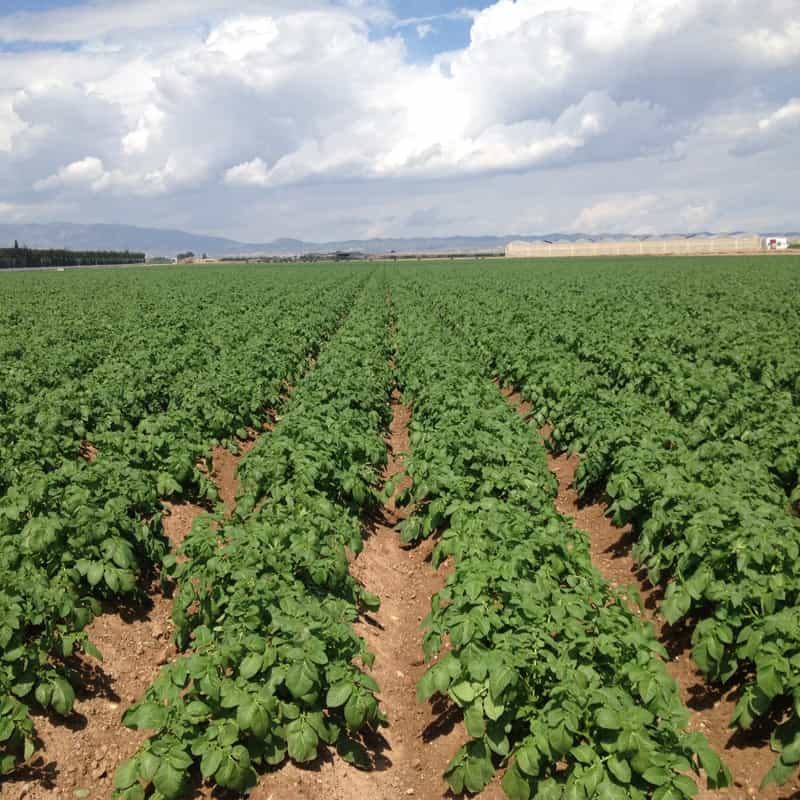

The potato originated in the Andes and is one of the world’s most important crops. It was introduced in Europe in the 16th century via Spain in 1570 and the British Isles between 1588 and 1593, from where it spread throughout Europe. Current production is 300 million tonnes of the fresh tuber spread over 19.5 million planted hectares. Asia and Europe are the world’s largest producing regions, accounting for more than 85% of global production. Today China is the largest producer. Asian accounts for almost half of world consumption, yet its overpopulation indicates that annual production per person was a modest amount.
It is a temperate climate plant and the ideal temperatures for its cultivation are around 20ºC. Very high temperatures affect tuber formation and favour the development of pests and diseases. Too cold temperatures have a negative effect as the tubers remain small and undeveloped.
Light is one of the key factors in potato cultivation because it induces tuberisation. Short photoperiods are more conducive to tuberisation and long photoperiods induce growth. In addition to influencing the final yield of the crop, long photoperiods induce growth while short photoperiods are more conducive to tuberisation. In addition to influencing photosynthetic activity, light intensity also favours flowering and fruiting.
The tubers are planted on the furrows at a distance of 0.5 m, with a spacing of 0.3 m, which means a planting density of approximately 35,000 tubers/ha; if the plantation is irrigated, higher densities can be achieved.
The choice of planting frame has no direct influence on overall production yield, although if the density is too high, it may result in smaller tubers, due to increased competition for light, water and nutrients.
It is a crop with high water requirements and from sowing onwards the water status of the soil has a direct influence on its development.
